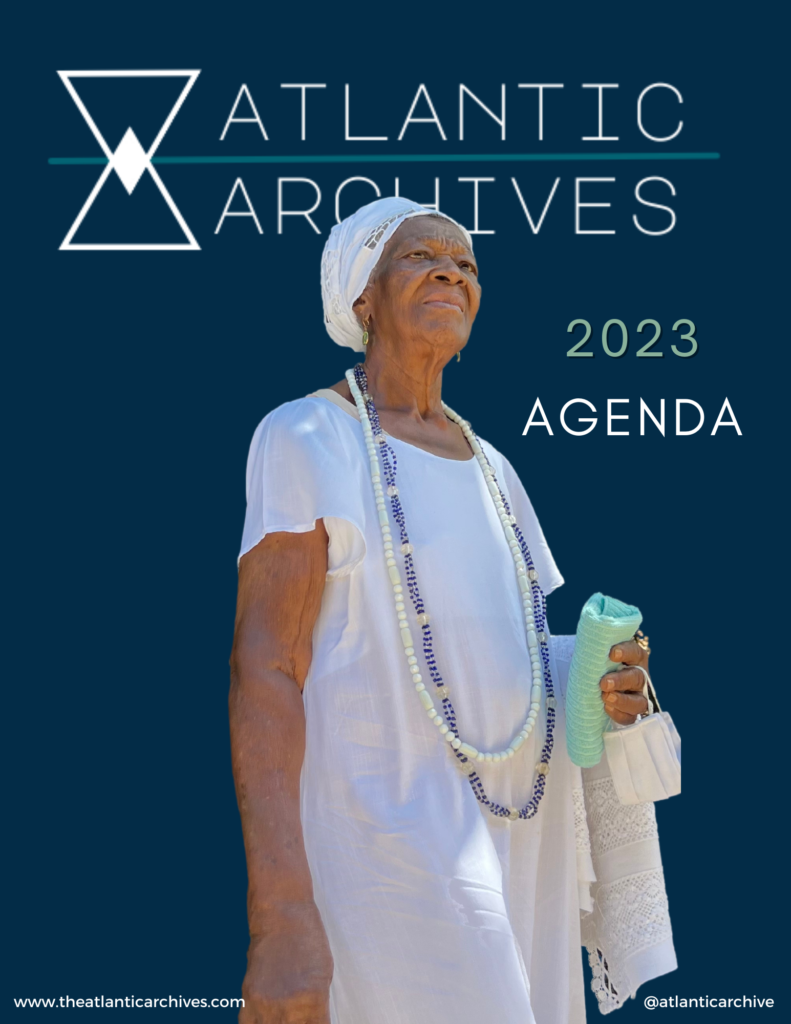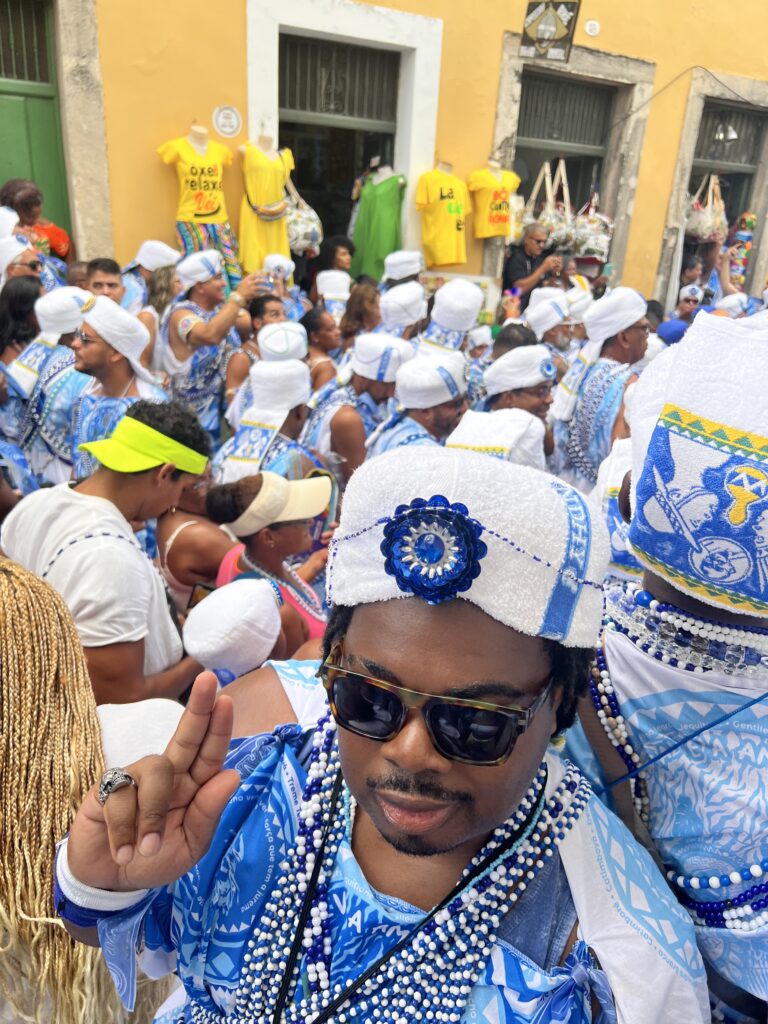Carnival season has ended, and I wanted to share my recent experience at the largest street carnival in the world in Salvador Bahia, Brazil.
Specifically, I want to give an inside look into my first experience with the Bloco Afros (historic Black carnival bands and supporters), Filhos de Gandhy- or the “Sons of Gandhi.” Also, I will share the agenda for my USA/Brazil diaspora project, Atlantic Archives, and how you can get involved.
Bloco Afros, or Afro-Brazilian carnival groups, have a rich and complex history in Salvador Bahia, Brazil. These groups emerged in the 1970s as a response to the marginalization of Afro-Brazilian culture and the exclusion of black people from mainstream carnival celebrations. Today, Afro Blocos are a central feature of Salvador’s carnival and a powerful symbol of black resistance, pride, and identity.
The first Afro Blocos emerged in the mid-1970s, inspired by the Black Consciousness movement and the long legacy of slavery in Brazil. The most notable of these groups is Ilê Aiyê, which was founded in 1974 and remains one of the most popular and influential Afro Blocos in Salvador. Ilê Aiyê’s theme is “beauty, strength, and Blackness,” and it has a strong focus on promoting Afro-Brazilian culture and identity.
Other notable Afro Blocos include Olodum, Muzenza, and Malê Debalê.
Afro Blocos are organized around a hierarchical structure, with a director and a board of directors overseeing the group’s activities. Members of the group are organized into “sections” based on their roles, such as musicians, dancers, or flag bearers. Each Bloco Afrohas its own unique style and theme, which is reflected in their costumes, music and choreography.
Afro Blocos have had a significant impact on the social and cultural landscape of Salvador and Bahia. These groups have provided a space for black people to express themselves, celebrate their culture and assert their rights.
They have also played a key role in the struggle for civil rights and racial equality in Brazil, challenging the dominant narrative of Brazilian identity as being exclusively white.
In recent years, Bloco Afros have also become an important cultural and economic resource for the city of Salvador. They attract thousands of tourists each year, generate significant revenue for local businesses and provide employment opportunities for musicians, dancers, and artisans. However, some critics have raised concerns about the commercialization and co-optation of Afro Blocos, arguing that they have become too focused on entertainment and less on social justice issues.
Since my first visit to Brazil, I have witnessed the mystic of the Filhos de Gandhy brotherhood. After three years without a carnival, I decided to join “Gandy” with a group of friends finally. The organization began in 1949 as a union of Black dock workers in Salvador, Bahia and Brazil and has become a significant cultural institution in Brazil and beyond.
The history of the Filhos de Gandhy is closely linked to the religious practices of the Candomblé spirituality in Brazil. The group adopted the name Gandhy as a way of paying tribute to the Indian leader, who was a symbol of non-violent resistance and social justice. They have appropriated the name to promote social justice, equality and racial pride in the Afro-Brazilian community.
Gandhy is known for its distinctive white robes, blue accessories, and turbans. The white robes and turbans are a symbol of peace, harmony and purity. The presence of the massive group during the carnival is a magnificent sight. My friends and I visited a house in the Liberdade neighborhood to have our turbans fitted by a special seamstress.
The costume package includes one large embossed towel. She then shapes the towel into a turban shape and sews it in place by hand.

The bloco’s signature sound is the ijexá, a rhythm from the candomblé religion that originated in West Africa and was brought to Brazil by enslaved Africans. The ijexá is characterized by its syncopated beats and complex polyrhythms, and it forms the backbone of many of the bloco’s songs.
In addition to the ijexá, the Filhos de Gandhy also incorporate other Afro-Brazilian rhythms into their music, such as samba-reggae and afoxé. They use a variety of percussion instruments, including the atabaque, agogô and repique, to create a dynamic and layered sound that is both festive and spiritual.
The preparation for carnival season begins months in advance, with rehearsals and costume making. Notable members of Filhos de Gandhy include Brazilian musician Gilberto Gil, who was a member in the 1960s and 1970s, and Brazilian politician and social activist Abdias do Nascimento, who was a founding member of the bloco.
During the Parade, thousands of Gandhy members march and dance in front of and behind the band, which sits atop a large triple-decker truck called a trio-electrico. My favorite part of this experience was the joy on the children’s faces as they watch the bloco pass by.
Like Mardi Gras in New Orleans, onlookers wait for or request to be gifted one of the many blue and white beaded necklaces carried by the bloco members as a symbol of fortune or to be misted with the lavender perfume carried by the Gandhy members.
It wasn’t all play during the carnival. My team and I were filming for a series of short documentaries about the many connections between Black communities in Brazil and the United States.
The educational series “From Below” is supported in part by Karen Hunter Media.
Some of the subjects include the struggle for Black History Curriculum in schools, sexual tourism, and Black spiritual practices. The documentary series centers on working class and intersectional realities.
Here’s a preview:
You can learn more about our work for 2023 and join us by downloading an information packet here:









